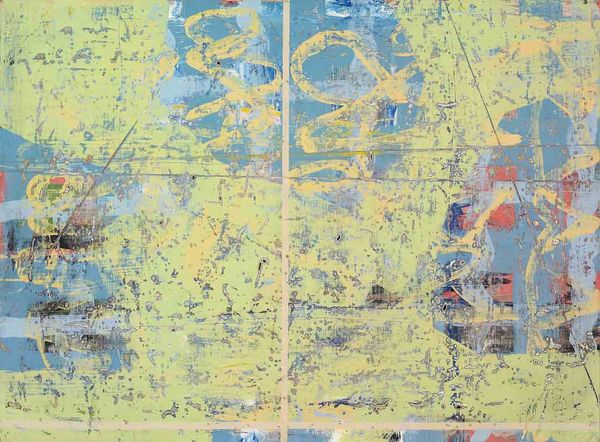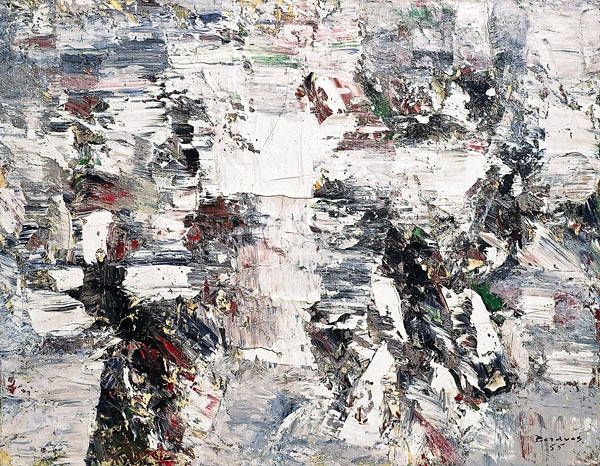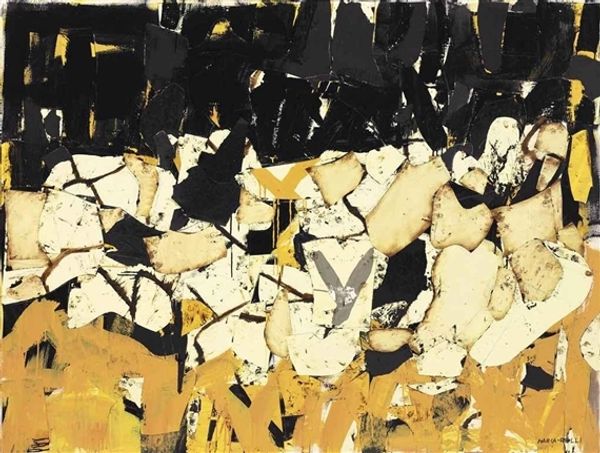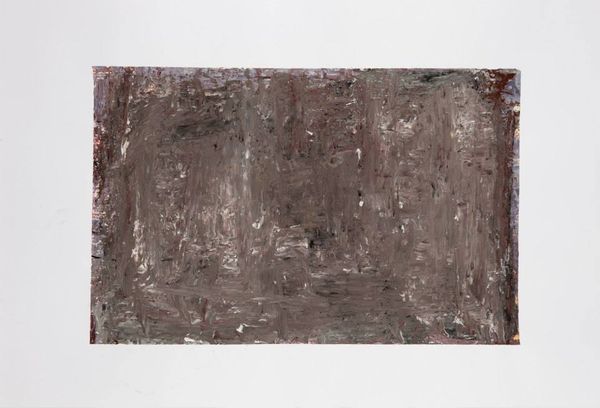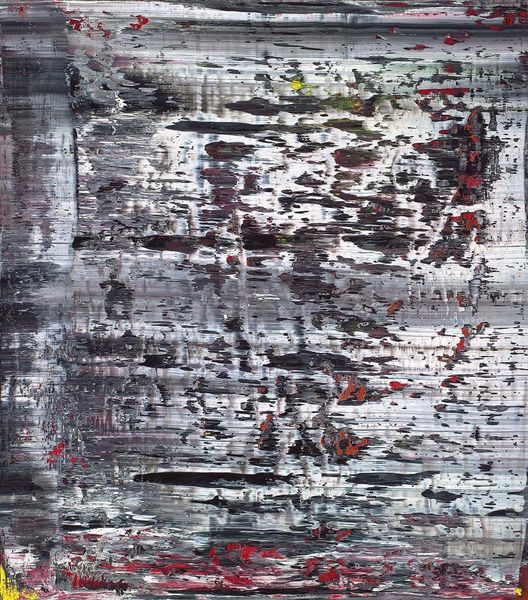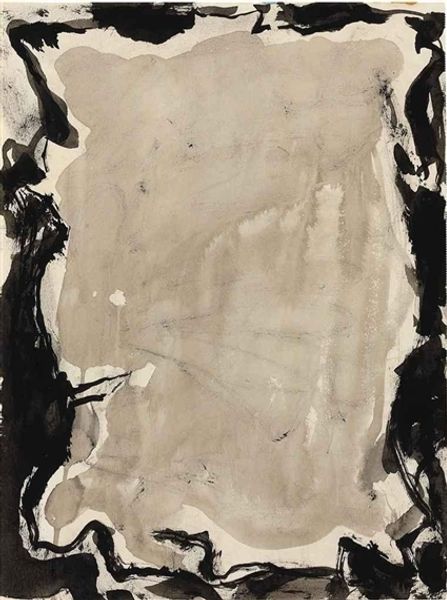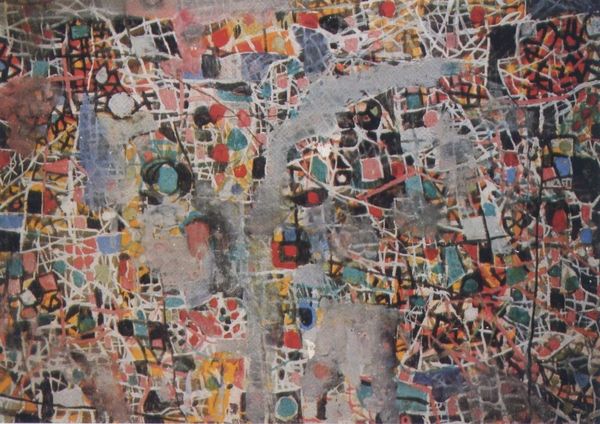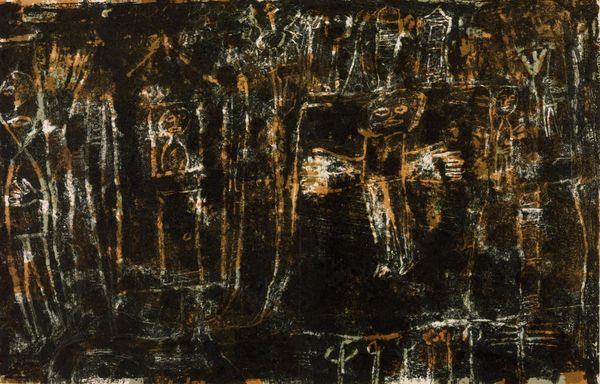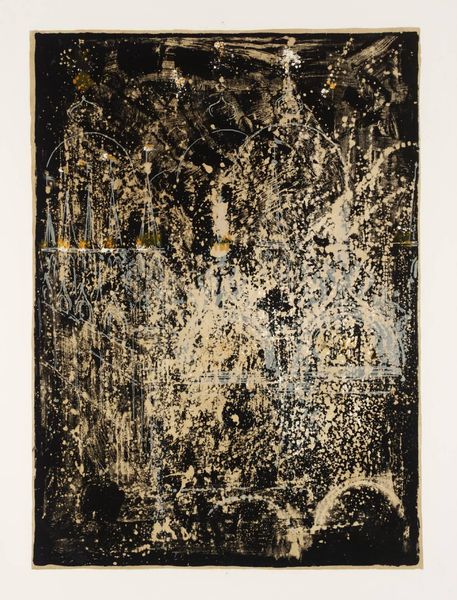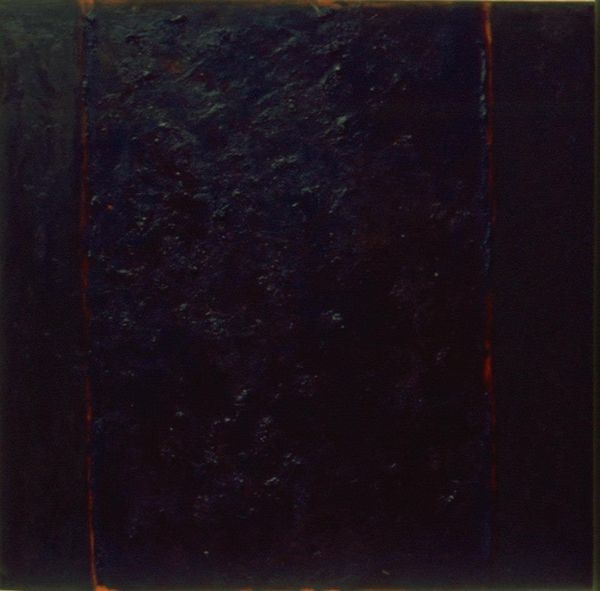
acrylic-paint
#
abstract-expressionism
#
abstract expressionism
#
acrylic-paint
#
matter-painting
#
line
Copyright: William Congdon,Fair Use
Curator: William Congdon's "The Black City I (New York)" from 1949 presents an intriguing example of matter painting rendered in acrylic. What are your initial thoughts? Editor: Overwhelming. The texture and layering feel almost claustrophobic, a dense web of marks dominating the canvas. There’s a striking contrast with that earthy, brown horizon line though—and what are those splashes of orange and green? They seem like glimmers of something hopeful breaking through. Curator: Absolutely, and it's essential to understand that Congdon developed this approach, matter painting, while grappling with existential themes in postwar America. He captures the weight and alienation permeating city life. Editor: It certainly embodies a post-war atmosphere of anxiety and decay, like the visual manifestation of emotional collapse. The stark blacks, the fractured lines—it evokes feelings of fragmentation, brokenness… perhaps even trauma? Curator: Yes, his exploration of urban environments often served as a critique of the rapid industrialization and social unrest following the war, focusing on its depersonalizing effects. Editor: In my experience, cities are never only negative. So what’s the significance of those bright flashes amidst the darkness? I see them almost like religious symbols. Could that splash of orange, coupled with the green, possibly point to a sense of resurrection amidst the urban sprawl? Curator: Fascinating observation! Given the period and Congdon's developing spiritual leanings, it’s likely a reaction against modern existentialist themes that reject religious iconography and sentiment, and so I think there may be multiple possible readings. How else would one cope? Editor: Perhaps that one finds oneself, finds each other in the urban sprawl. Curator: Perhaps the symbols represent an opportunity to subvert expectations. Editor: Precisely. After spending time with it, I now realize I feel an uneasy yet fascinating hope. Curator: Yes, the interplay of darkness and unexpected light provides a means to understand resilience during times of radical change.
Comments
No comments
Be the first to comment and join the conversation on the ultimate creative platform.


